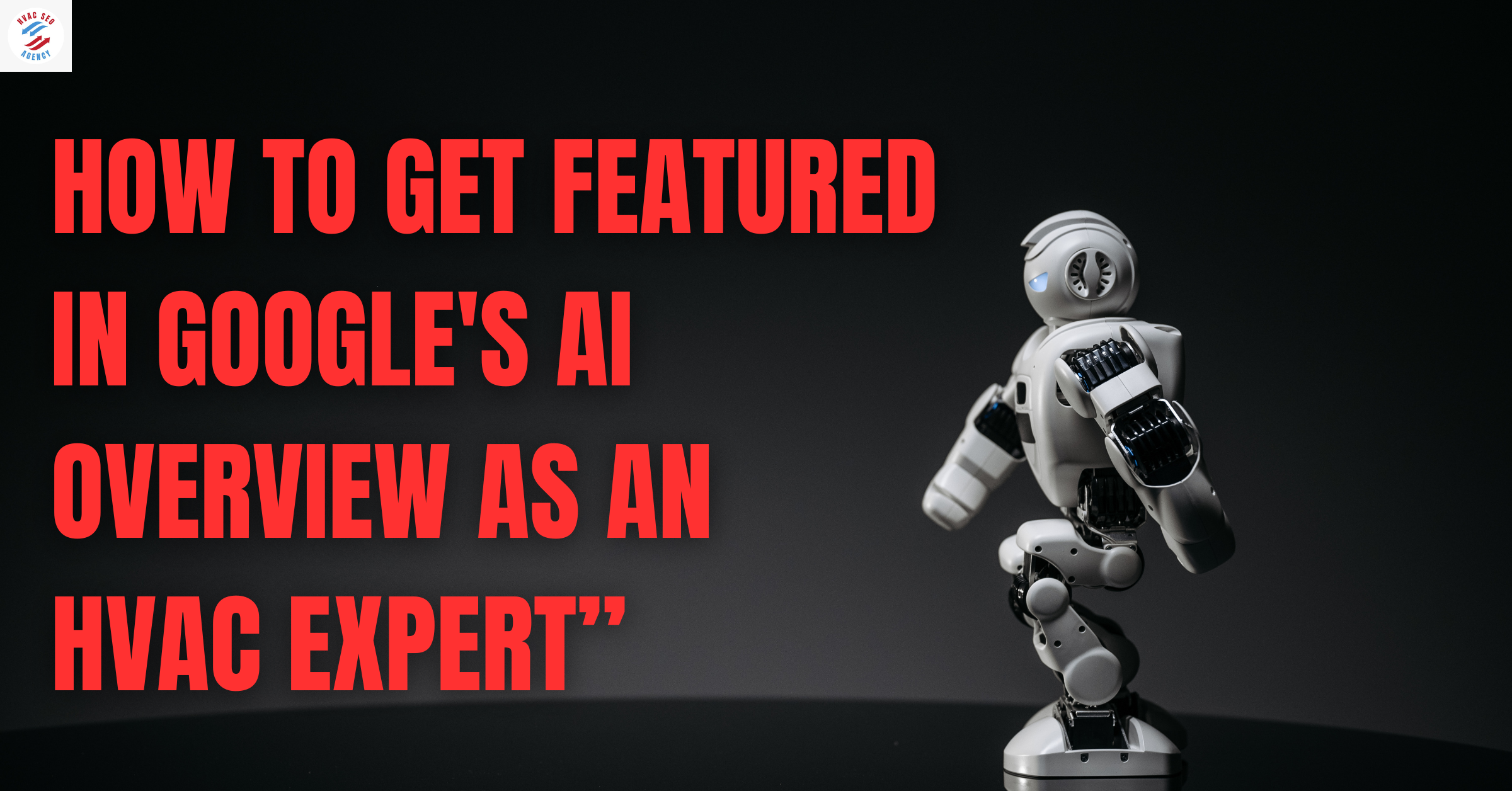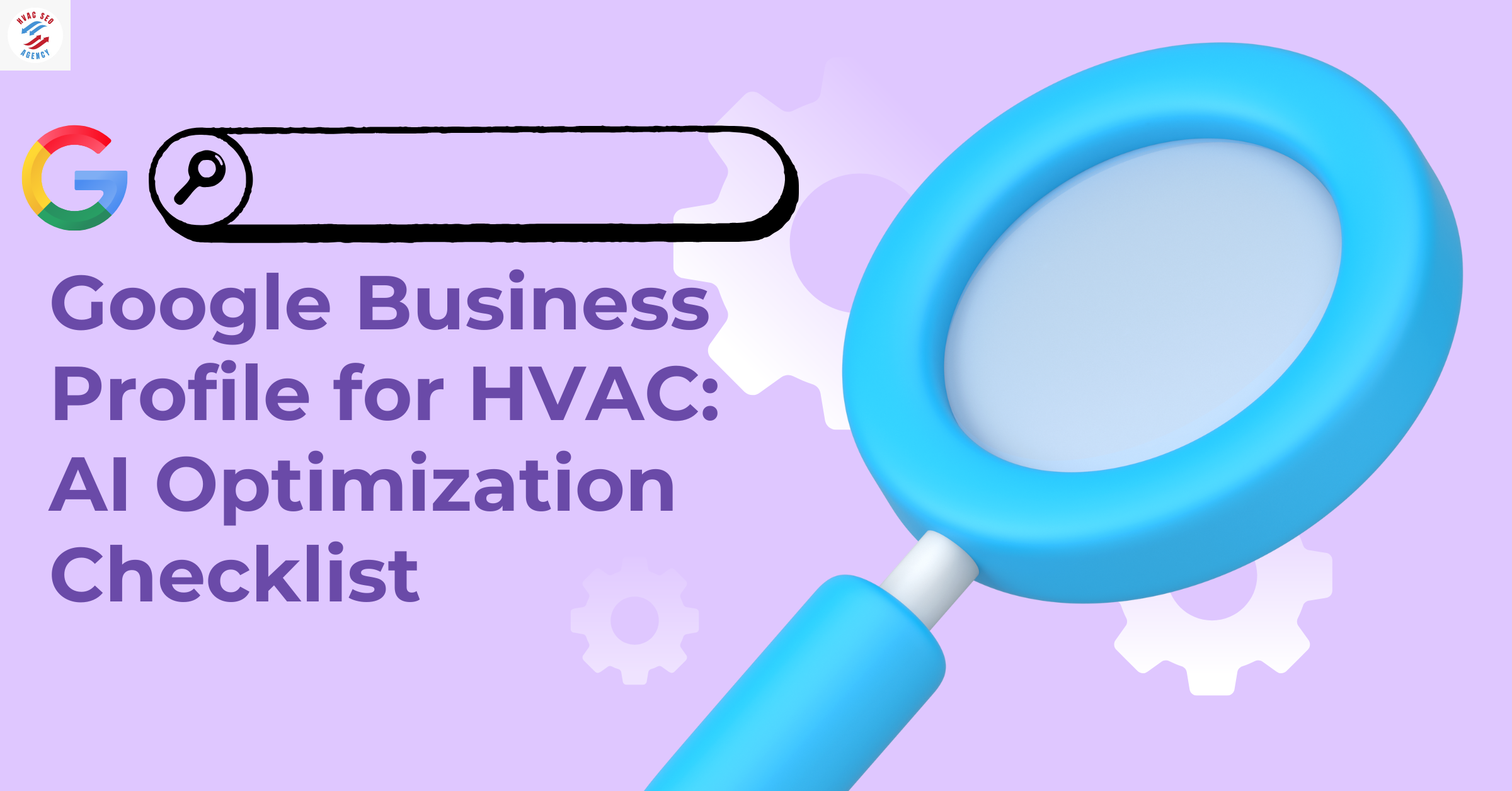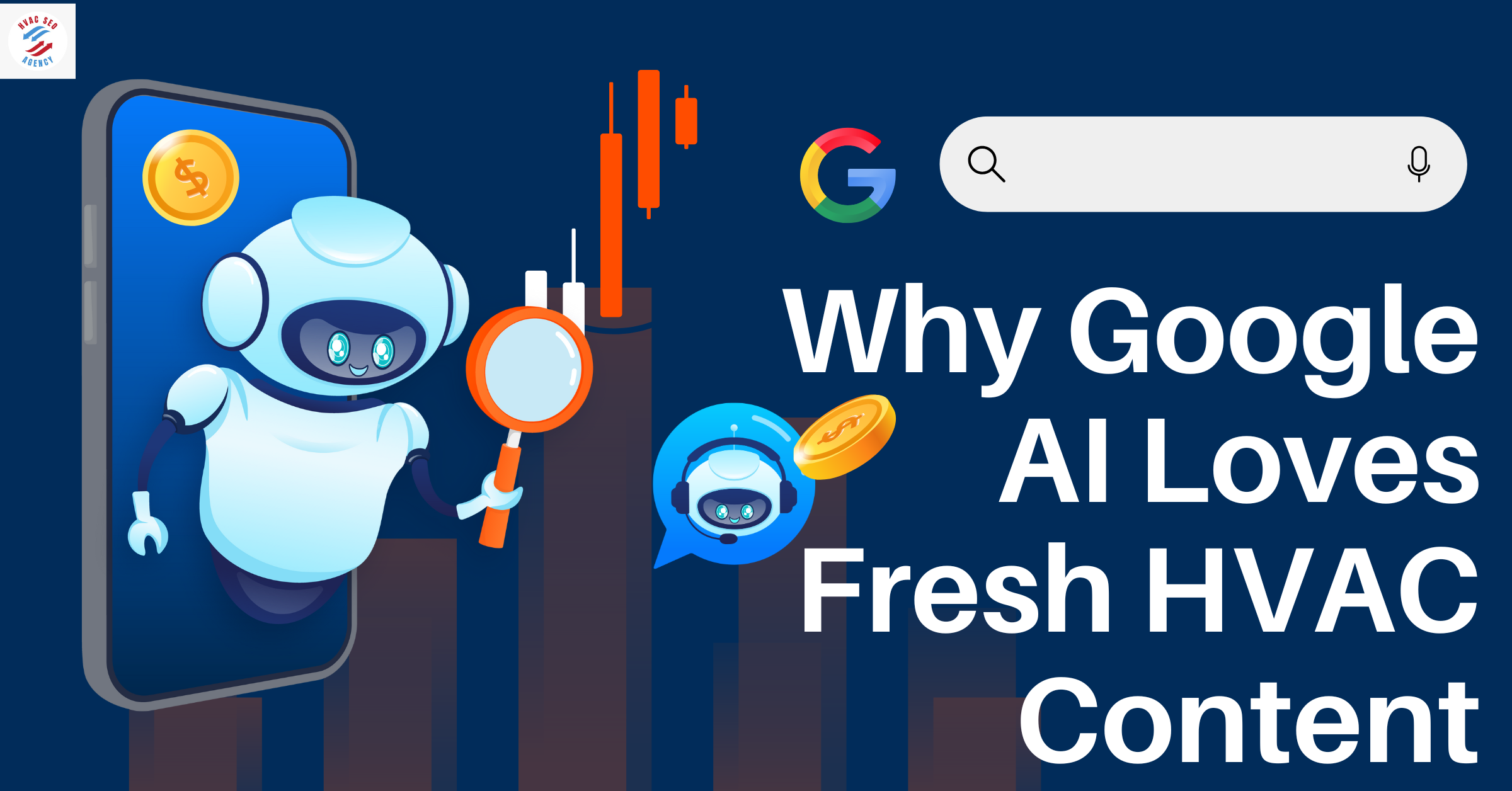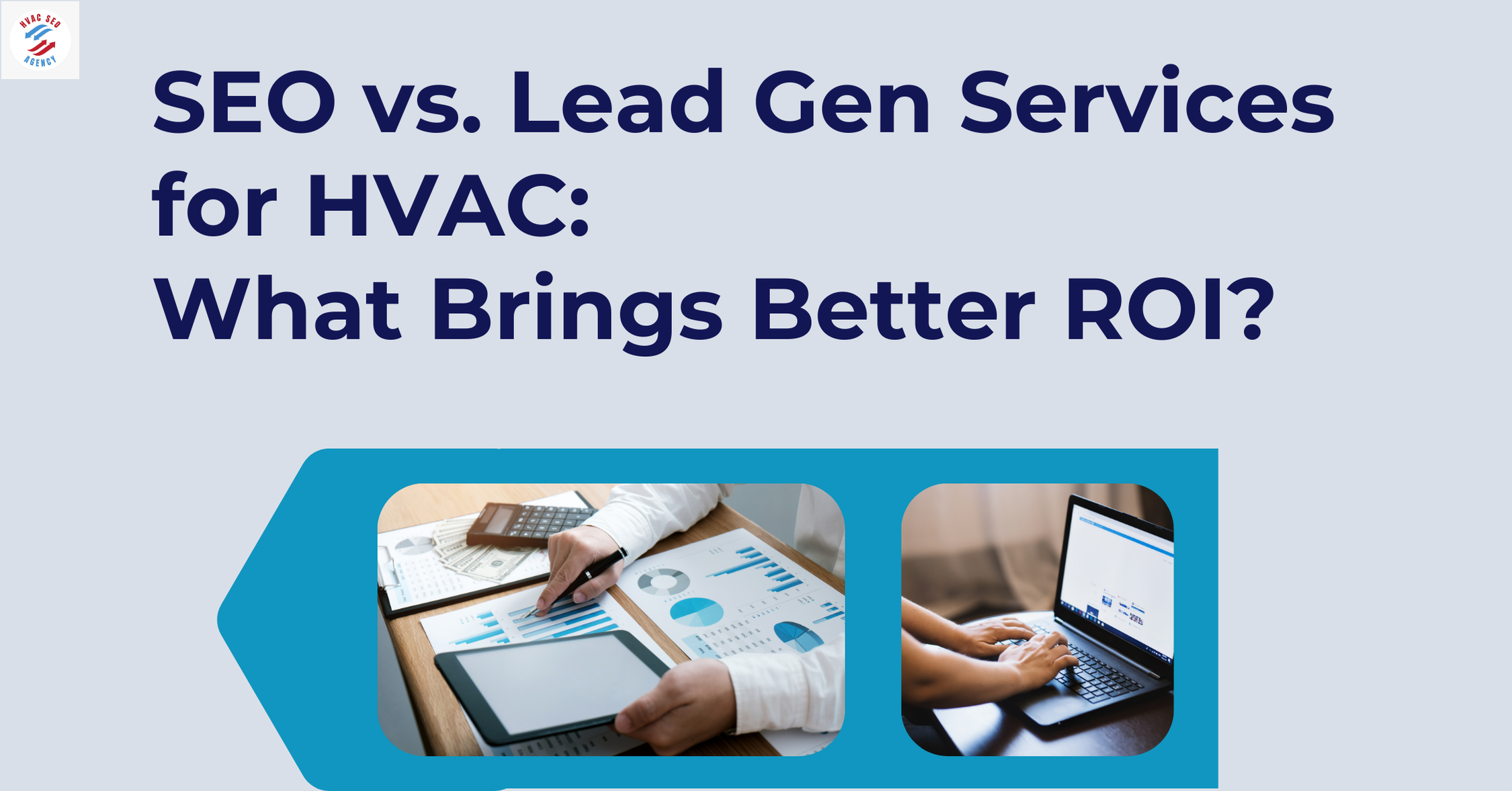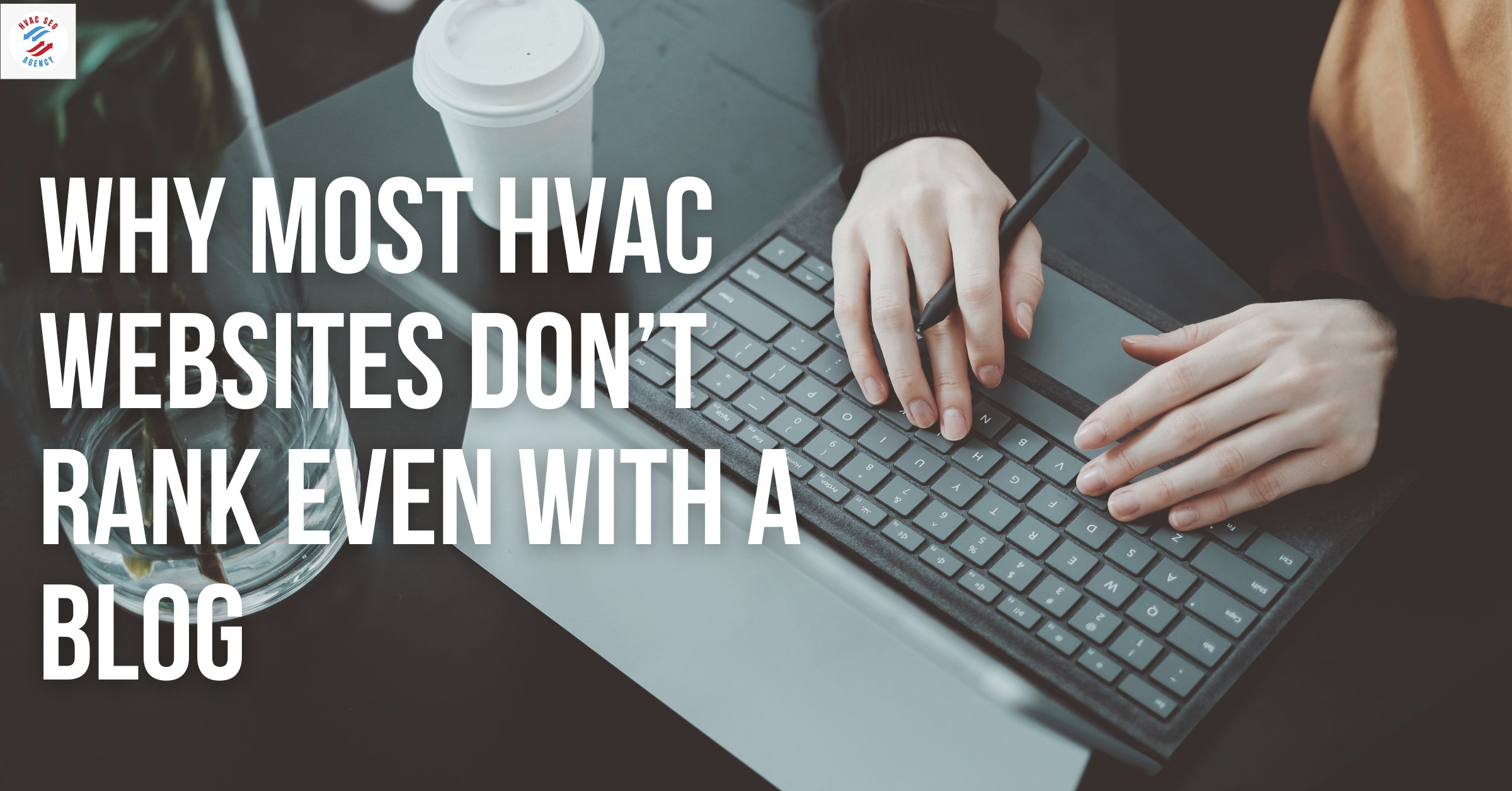How to Improve Your HVAC Website’s Speed & Performance

Section 1: The Importance of Website Speed and SEO for HVAC Companies
In today's digital landscape, a fast-loading website is crucial for HVAC companies aiming to attract and retain customers. Website speed not only enhances user experience but also significantly impacts search engine rankings. For HVAC businesses, this means that optimizing website speed can lead to increased visibility, higher traffic, and more conversions.
Why Website Speed Matters
User Experience: Slow-loading websites frustrate users, leading to higher bounce rates. A delay of even a few seconds can deter potential customers from engaging with your services.
Search Engine Rankings: Search engines like Google consider page speed as a ranking factor. Faster websites are more likely to appear higher in search results, increasing the chances of attracting organic traffic.
Conversion Rates: Improved website speed can lead to higher conversion rates. Users are more likely to take desired actions, such as filling out contact forms or calling for services, on websites that load quickly.
SEO for HVAC Companies
Implementing effective SEO strategies is essential for HVAC companies to improve their online presence. SEO involves optimizing various aspects of your website to rank higher in search engine results, making it easier for potential customers to find your services.
Key components of SEO for HVAC companies include:
Keyword Optimization: Incorporating relevant keywords, such as "HVAC repair" or "air conditioning services," throughout your website content.
Content Creation: Developing informative and engaging content that addresses common customer queries and showcases your expertise.
Technical SEO: Ensuring your website is technically sound, with proper site structure, mobile responsiveness, and fast loading times.
Backlink Building: Acquiring high-quality backlinks from reputable sources to boost your website's authority.
Local SEO for HVAC Contractors in Dallas
For HVAC contractors operating in specific cities, local SEO is vital. Local SEO focuses on optimizing your online presence to attract customers in your geographic area.
Strategies for effective local SEO include:
Google Business Profile: Creating and optimizing your Google Business Profile with accurate information, including your business name, address, phone number, and operating hours.
Local Keywords: Incorporating city-specific keywords, such as "HVAC services in [City]" or "air conditioning repair [City]," into your website content.
Online Reviews: Encouraging satisfied customers to leave positive reviews on platforms like Google and Yelp to build trust and credibility.
Local Citations: Ensuring your business is listed accurately in local directories and online listings.
By focusing on website speed optimization and implementing comprehensive SEO strategies, HVAC companies can enhance their online visibility, attract more local customers, and ultimately drive business growth.
Section 2: Understanding HVAC Website Speed and Its Impact on Business Performance
In the competitive HVAC industry, website speed is a critical factor influencing user experience, search engine rankings, and conversion rates. A fast-loading website not only retains visitors but also enhances the effectiveness of SEO strategies, leading to increased leads and revenue.
The Significance of Website Speed
User Experience: Slow-loading websites frustrate users, leading to higher bounce rates. Studies indicate that a delay of even a few seconds can deter potential customers from engaging with your services.
Search Engine Rankings: Search engines like Google consider page speed as a ranking factor. Faster websites are more likely to appear higher in search results, increasing the chances of attracting organic traffic.
Conversion Rates: Improved website speed can lead to higher conversion rates. Users are more likely to take desired actions, such as filling out contact forms or calling for services, on websites that load quickly.
Statistical Insights
Graph: Website Load Time vs. Bounce Rate
Section 3: Proven Techniques to Enhance HVAC Website Speed and Performance
Optimizing your HVAC website's speed is crucial for improving user experience, search engine rankings, and conversion rates. Implementing the following techniques can significantly enhance your website's performance:
1. Image Optimization
Compress Images: Utilize tools like TinyPNG or Squoosh to reduce image file sizes without compromising quality.
Use Appropriate Formats: Implement modern image formats such as WebP for better compression and faster loading times.
Lazy Loading: Defer the loading of off-screen images until they are needed to improve initial load times.
2. Minimize HTTP Requests
Combine Files: Merge CSS and JavaScript files to reduce the number of HTTP requests.
Use CSS Sprites: Combine multiple images into a single sprite sheet to decrease the number of image requests.
3. Enable Browser Caching
Set Expiry Headers: Configure your server to specify how long browsers should cache certain files.
Leverage Caching Plugins: For CMS platforms like WordPress, use caching plugins to manage browser caching effectively.
4. Implement a Content Delivery Network (CDN)
Distribute Content Globally: Use a CDN to serve your website's content from servers closest to your users, reducing latency.
Improve Load Times: CDNs can significantly decrease page load times, especially for users located far from your primary server.
5. Minify CSS, JavaScript, and HTML
Remove Unnecessary Characters: Eliminate whitespace, comments, and redundant code to reduce file sizes.
Use Minification Tools: Employ tools like UglifyJS for JavaScript and CSSNano for CSS to automate the minification process.
6. Optimize Server Response Time
Choose Reliable Hosting: Select a hosting provider known for performance and uptime.
Upgrade Server Resources: Ensure your server has adequate resources (CPU, RAM) to handle your website's traffic.
7. Reduce Redirects
Limit Redirect Chains: Avoid multiple redirects that can slow down page loading.
Update Internal Links: Ensure all internal links point directly to the final destination without unnecessary redirects.
8. Enable Gzip Compression
Compress Files: Use Gzip to compress your website's files, reducing their size and speeding up transmission to users' browsers.
9. Implement Asynchronous Loading for CSS and JavaScript
Load Scripts Asynchronously: Modify script tags to load JavaScript files asynchronously, preventing them from blocking page rendering.
Defer Non-Critical CSS: Delay the loading of non-essential CSS to prioritize above-the-fold content.
10. Monitor Performance Regularly
Use Performance Tools: Regularly assess your website's speed using tools like Google PageSpeed Insights and GTmetrix.
Analyze Metrics: Focus on key performance indicators such as Time to First Byte (TTFB) and First Contentful Paint (FCP) to identify areas for improvement.
By systematically applying these techniques, HVAC companies can significantly enhance their website speed, leading to better user engagement, higher search engine rankings, and increased conversion rates.
Section 4: The Role of HVAC SEO Agencies in Enhancing Website Speed and Business Growth
In the competitive HVAC industry, partnering with a specialized HVAC SEO agency is crucial for optimizing website speed and driving business growth. These agencies possess the expertise to implement strategies that enhance website performance, improve search engine rankings, and increase lead generation.
Benefits of Collaborating with an HVAC SEO Agency
Expertise in HVAC Industry: HVAC SEO agencies understand the unique challenges and opportunities within the HVAC sector, allowing them to tailor strategies that resonate with the target audience.
Comprehensive Website Optimization: These agencies conduct thorough audits to identify areas for improvement, including page load times, mobile responsiveness, and user experience enhancements.
Local SEO Strategies: Implementing local SEO tactics, such as optimizing Google Business Profiles and acquiring local citations, helps HVAC companies attract customers in specific geographic areas.
Content Development: HVAC SEO agencies create informative and engaging content that addresses common customer queries, establishing the company as an authority in the field.
Performance Monitoring: Regular analysis of website metrics allows for continuous improvement, ensuring that optimization efforts lead to tangible business results.
Impact on Business Growth
By enhancing website speed and implementing effective SEO strategies, HVAC companies can experience:
Increased Website Traffic: Improved search engine rankings lead to higher visibility and more visitors to the website.
Higher Conversion Rates: A fast-loading, user-friendly website encourages visitors to take desired actions, such as scheduling services or requesting quotes.
Enhanced Brand Credibility: A professional online presence builds trust with potential customers, positioning the company as a reliable service provider.
Greater Return on Investment (ROI): Strategic SEO efforts result in cost-effective lead generation and increased revenue over time.
In summary, collaborating with an HVAC SEO agency is a strategic move that can significantly enhance website speed, improve online visibility, and drive substantial business growth.
Section 5: Mobile Optimization and Its Impact on HVAC Website Speed
As mobile usage continues to dominate internet access in the United States, ensuring your HVAC website is fully optimized for mobile devices is no longer optional—it is essential. Mobile optimization directly affects website speed, user engagement, and your Google rankings, especially with the rollout of mobile-first indexing.
Why Mobile Optimization Matters
Over 63% of Google’s U.S. traffic comes from mobile devices (Statista, 2024).
Mobile users are 5 times more likely to abandon a site if it isn’t optimized for mobile (Google Research).
Google’s mobile-first indexing prioritizes the mobile version of your website when ranking pages.
Key Mobile Optimization Tactics for HVAC Websites
1. Responsive Design
Ensure your HVAC site adapts to all screen sizes—from smartphones to tablets. Responsive design eliminates the need for zooming, improves readability, and keeps navigation simple.
2. Accelerated Mobile Pages (AMP)
AMP improves mobile load times by streamlining HTML and JS code. While not mandatory, AMP pages tend to load much faster and often rank better.
3. Touch-Friendly Navigation
Ensure that buttons, menus, and call-to-action links are easily clickable with a thumb. Avoid small or clustered links.
4. Minimize Mobile Popups
Avoid intrusive interstitials and large popups that slow down load speed or obstruct the content on smaller screens.
5. Use Lightweight Themes
Especially for WordPress-based HVAC websites, heavy themes can bog down speed on mobile. Use a minimal, performance-optimized theme.
Table: Mobile Optimization Best Practices vs. Speed Gains
(Source: HubSpot, Google PageSpeed Insights Aggregated Data – 2024)
Graph: Bounce Rate on Mobile vs. Load Time
Section 6: Tools and Technologies to Measure and Improve HVAC Website Speed
To effectively enhance your HVAC website speed, you need to rely on industry-standard tools and technologies that diagnose, measure, and optimize performance. These tools not only provide insights into what's slowing down your site but also offer actionable recommendations to fix them.
1. Google PageSpeed Insights
Analyzes both mobile and desktop versions of your HVAC site.
Provides scores for Core Web Vitals: Largest Contentful Paint (LCP), First Input Delay (FID), and Cumulative Layout Shift (CLS).
Gives direct suggestions like minifying JavaScript or enabling text compression.
Stat: Google research shows that improving LCP from 3s to under 2.5s can reduce bounce rates by up to 24%.
2. GTmetrix
Offers detailed page speed reports including waterfall analysis.
Grades your site based on performance and structure.
Helps monitor the time taken by images, scripts, and CSS to load.
3. Lighthouse (Chrome DevTools)
Built into Chrome browser for in-depth audits.
Scores performance, SEO, accessibility, and more.
Ideal for HVAC site developers working in real-time.
4. WebPageTest.org
Allows testing from multiple locations (U.S. cities).
Visual load progression with filmstrip view.
Advanced metrics like Speed Index and First Contentful Paint.
5. Pingdom Tools
Simplified UI and historical performance monitoring.
Highlights slow-loading elements in real-time.
Great for beginners tracking HVAC site optimization progress.
Table: Best Tools to Analyze HVAC Website Speed
Graph: Speed Scores from Major Tools (Sample HVAC Site)
Section 7: Common Mistakes That Slow Down HVAC Websites
Even with the best intentions, many HVAC companies unknowingly make technical and content-related mistakes that harm their website speed. These slowdowns not only frustrate users but also damage SEO rankings, reduce conversions, and increase bounce rates. Identifying and correcting these common errors is crucial for proper HVAC website speed and HVAC site optimization.
1. Oversized and Uncompressed Images
Large image files are among the top reasons for slow-loading HVAC websites. High-resolution photos of HVAC systems or service vehicles can easily be optimized without losing quality.
Fix: Use tools like TinyPNG or WebP formats to compress images before uploading.
2. Too Many Plugins (Especially on WordPress)
While plugins add functionality, excessive or outdated plugins can bloat your site and slow load times.
Fix: Deactivate and delete unnecessary plugins. Use lightweight alternatives where possible.
3. Not Using Browser Caching
Without browser caching, visitors must reload all assets every time they visit your HVAC site, increasing server requests.
Fix: Set caching rules in your .htaccess file or use a plugin like W3 Total Cache.
4. No Content Delivery Network (CDN)
Hosting all assets on a single server causes slow load times for visitors located far from that server.
Fix: Use a CDN like Cloudflare or StackPath to serve content faster across geographic regions.
5. Poor Mobile Experience
A mobile-unfriendly design leads to higher bounce rates. Google’s Core Web Vitals focus heavily on mobile performance.
Fix: Ensure your HVAC site is fully responsive and tested with mobile-first design in mind.
6. Render-Blocking JavaScript and CSS
These scripts delay the page from displaying anything until they finish loading.
Fix: Defer non-critical JavaScript and load essential CSS asynchronously.
7. Not Minifying Code
Bloated HTML, CSS, or JavaScript slows down the page. This is often overlooked in HVAC sites built using themes or page builders.
Fix: Minify code using tools like UglifyJS, CSSNano, or online compressors.
8. Excessive Redirects
Redirect chains (A → B → C → D) are inefficient and confuse both users and search engines.
Fix: Audit your redirect structure and fix outdated or looping redirects.
Table: Common HVAC Website Mistakes and Their Speed Impact
Section 8: How Website Speed Influences HVAC Lead Generation and Revenue
Website speed is not just a technical metric—it’s a direct business driver. For HVAC companies, faster websites lead to more form fills, phone calls, service bookings, and ultimately, higher revenue. In the competitive U.S. HVAC market, a slow website is more than an inconvenience—it's lost income.
Fast Websites Convert More
Every 1-second delay in page load time reduces conversions by up to 7% (Akamai, 2023).
53% of users abandon websites that take longer than 3 seconds to load (Google, 2024).
HVAC service shoppers tend to act fast—if your site lags, they’ll call a competitor.
Case Study Insight
A Chicago-based HVAC firm improved its website load time from 4.2 seconds to 1.6 seconds and saw:
+35% increase in quote form submissions
+24% boost in mobile call conversions
-42% drop in bounce rate
These gains came from optimizing images, enabling browser caching, and using a CDN.
The Conversion Funnel Impact
Website Speed → User Experience → Engagement → Lead Conversion → Revenue Growth
Slow websites break this funnel early, leading to higher bounce and fewer booked jobs.
Table: HVAC Speed Metrics and Revenue Correlation
(Source: Google UX Benchmarks, HVAC Web Data 2024)
Section 9: The Link Between Core Web Vitals and HVAC Website Optimization
Core Web Vitals are Google’s official performance metrics designed to evaluate real-world user experience. For HVAC companies aiming to boost rankings, increase leads, and enhance user experience, optimizing these vitals is essential. They're directly tied to HVAC website speed and HVAC site optimization—making or breaking your site’s ability to rank competitively in the U.S. market.
What Are Core Web Vitals?
Google currently focuses on three main metrics:
Why They Matter for HVAC Businesses
LCP ensures your service images, call buttons, or homepage hero loads fast—critical for HVAC visitors who want quick service access.
FID reflects how quickly someone can tap “Call Now” or “Request Estimate” after loading the page.
CLS affects trust. Sudden shifts frustrate users trying to book a service or read pricing.
Impact on Search Ranking and Revenue
Google uses Core Web Vitals as part of its Page Experience ranking signal.
Sites meeting Core Web Vitals criteria see 24% fewer user abandonments (Google, 2024).
HVAC sites that pass Core Web Vitals load 25–35% faster, resulting in more service calls and quote requests.
Table: Core Web Vitals Compliance and Business Impact
(Source: Web.dev, Chrome UX Report 2024)
Section 10: Real-World Examples of HVAC Website Speed Optimization Success
Nothing validates a digital strategy more than real results. Several HVAC businesses across the U.S. have significantly improved their website speed and seen measurable gains in traffic, leads, and revenue. These case studies demonstrate how HVAC website speed and HVAC site optimization drive tangible business outcomes when implemented correctly.
Case Study 1: Denver HVAC Company – 2X Increase in Leads
Initial Load Time: 5.3 seconds
Optimization Actions:
Image compression using WebP
Minified JavaScript and CSS
Implemented CDN with Cloudflare
Final Load Time: 1.9 seconds
Results:
Bounce rate dropped by 37%
Leads doubled within 6 weeks
PageSpeed Insights score improved from 49 to 91 (mobile)
Case Study 2: Miami HVAC Contractor – Revenue Up 28%
Initial Issues:
Render-blocking JavaScript
No caching
Heavy WordPress theme
Optimization Actions:
Switched to lightweight theme
Installed WP Rocket caching plugin
Removed unnecessary plugins
Results:
Page load time improved from 4.6s to 1.8s
Quote requests up by 30%
Monthly revenue increased by 28%
Case Study 3: Chicago-Based Commercial HVAC – Local SEO Boost
Combined Local SEO for HVAC Contractors in Chicago with technical speed improvements:
Optimized Google Business Profile
Added schema markup
Reduced server response time
Results:
Increased rankings for “commercial HVAC services Chicago”
3X more traffic from mobile users
42% higher call volume in 90 days
Table: Summary of HVAC Optimization Wins
FAQs: HVAC Website Speed & Optimization
1. Why is HVAC website speed so important for my business?
Because speed affects everything—user experience, search engine rankings, and conversion rates. Faster websites result in more calls, form submissions, and ultimately, more service bookings.
2. How fast should my HVAC website load?
Ideally, under 2.5 seconds. This aligns with Google's Core Web Vitals benchmarks and ensures minimal bounce rates.
3. What are Core Web Vitals and why do they matter?
They’re Google’s user-experience metrics:
LCP (Largest Contentful Paint) – Load speed
FID (First Input Delay) – Interactivity
CLS (Cumulative Layout Shift) – Visual stability
Passing these metrics boosts your site’s chances of ranking higher.
4. How often should I check my HVAC site’s speed?
Run tests monthly using PageSpeed Insights, GTmetrix, or Lighthouse. Also, monitor after major updates, design changes, or plugin additions.
5. Can an HVAC SEO agency really help with speed optimization?
Absolutely. They handle both front-end and back-end optimizations, integrate SEO best practices, and ensure your website ranks and converts effectively—especially for local HVAC SEO.
6. Does site speed affect mobile users more than desktop?
Yes. Over 60% of HVAC traffic comes from mobile. Slow mobile performance drives high bounce rates, which hurts conversions and SEO rankings.
7. What’s the ROI of HVAC site optimization?
Significant. Speed improvements lead to better rankings, lower bounce rates, and increased leads. Many HVAC companies report 20–50%+ growth in revenue post-optimization.
Conclusion: Speed is the Unsung Hero of HVAC Growth
If you're serious about growing your HVAC business in a competitive market like the U.S., your website cannot afford to be slow. Every extra second your site takes to load costs you leads, customers, and revenue.
Fast websites rank higher
Fast websites convert better
Fast websites build trust
Investing in HVAC website speed and holistic HVAC site optimization is not just about keeping up with Google's algorithm—it's about winning more local business. Whether you work with a professional HVAC SEO agency or optimize in-house, the results are clear: speed is the shortcut to sustainable digital success.


